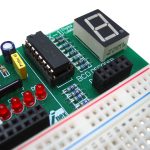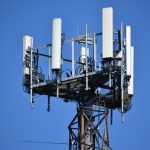
Introduction
Light sensors are significant components in modern technology, offering the potential to enhance functionality, efficiency, and user experience across various applications. Effectively selecting and designing light sensor solutions is paramount, and it requires a thorough understanding of the different types of sensors, key selection parameters, and best design practices. This article outlines the key factors involved in choosing and designing effective light sensor solutions.
Understanding Light Sensors
Light sensors, also called photodetectors or photosensors, are electronic devices designed to detect light intensity and convert it into electrical signals. They operate based on the photoelectric effect, wherein incident photons interact with the sensor material, generating electron-hole pairs and thus producing a measurable current or voltage. A light sensor is significant in detecting, measuring, and responding to various levels of light intensity, enabling devices and systems to adapt and function efficiently in different environments.
The Need for Effective Design and Selection of Light Sensors
The fundamental purpose of considering multiple parameters when choosing the best light sensor is to develop user-desired sensor solutions that meet the needs of diverse industries and applications. The significance of light sensors’ selection and design parameters also lies in the fact that these sensors find versatile applications in a broad spectrum of domains and are integral in multiple equipment, including:
Ambient Light Sensing in Consumer Electronics:
- Automatic Brightness Adjustment in Smartphones and TVs
- Daylight Harvesting in Smart Lighting Systems
Proximity Sensing in Wearable Devices:
- Gesture Recognition and Touchless Controls
- Sleep Tracking and Activity Monitoring
Industrial Automation and Robotics:
- Object Detection and Sorting in Manufacturing
- Robotic Navigation and Obstacle Avoidance
Environmental Monitoring:
- Solar Irradiance Measurement for Renewable Energy Systems
- UV Index Sensing for Skin Protection Devices.
Most Popular Types of Light Sensors
Light sensors come in various types, each suited for specific applications and environments. Some common types include:
- Photodiodes: Photodiodes are semiconductor devices that generate a current proportional to the incident light intensity. Photodiodes are highly responsive and find applications in light meters, optical communication systems, and proximity sensors.
- Phototransistors: Similar to photodiodes, phototransistors also produce a current in response to light, but with amplification due to their transistor structure. They offer increased sensitivity and are commonly used in light barriers, optical switches, and ambient light sensing.
- Photoresistors (LDR): Also called light-dependent resistors, these sensors exhibit a change in resistance with varying light intensity. They are simple and cost-effective but may suffer from slow response times and limited spectral range. Photoresistors are often used in consumer electronics, such as automatic night lights and camera exposure control.
- Photovoltaic Cells: These devices convert light energy directly into electrical energy, commonly used in solar panels for renewable energy generation.
Key Factors in Sensor Selection: Exploring Critical Parameters
Selecting the appropriate light sensor can ensure its optimal performance and reliability in a given application. Several key factors must be considered during the selection process, such as:
- Spectral Response: Different sensors exhibit varying spectral sensitivities, meaning they respond differently to different wavelengths of light. It’s essential to choose a sensor with a spectral response tailored to the specific application requirements.
- Sensitivity and Dynamic Range: Sensitivity is the sensor’s ability to detect minor changes in light intensity, while dynamic range is the range of light levels over which the sensor can accurately respond. Depending on the application, sensitivity and dynamic range must be balanced to ensure reliable operation across varying light conditions.
- Response Time: A sensor’s response time determines how quickly it can react to changes in light intensity. In applications requiring real-time responsiveness, such as motion detection or adaptive lighting systems, fast response times are critical.
- Noise Characteristics: Noise can degrade the accuracy and reliability of light sensor measurements. It’s essential to consider both intrinsic and external noise sources when selecting a sensor.
- Environmental Considerations: Environmental factors, including temperature, humidity, and ambient light levels, can influence sensor performance. Choosing sensors with appropriate environmental ratings and robust packaging is essential for ensuring reliable operation in harsh conditions.
- Power Consumption: In battery-powered or energy-efficient devices, minimising power consumption is vital to extend battery life and reduce operational costs. Choosing low-power sensors or implementing power-saving features can help achieve this goal.
- Cost and Availability: Finally, balancing performance requirements with cost constraints is essential to ensure cost-effective solutions.
Design Considerations of Light Sensors for Effective Sensor Solutions
Once the appropriate sensor has been selected, careful attention must be given to the design and integration of the sensor into the overall system. Several design considerations can influence the performance and reliability of light sensor solutions:
Optical Design
The system’s optical design, including lenses, filters, and shielding, can significantly impact the sensitivity, accuracy, and reliability of light sensor measurements. Proper optical design is crucial for maximising signal-to-noise ratio and minimising unwanted environmental effects.
Signal Conditioning
Depending on the sensor output and application requirements, signal conditioning circuits may be necessary to amplify, filter, or digitise the sensor signals. Analog front-end circuits, such as trans-impedance amplifiers or voltage amplifiers, can improve signal quality and enhance the sensor’s performance.
Calibration and Compensation
Light sensors may exhibit variations in sensitivity, response, and drift over time and environmental conditions. Calibration techniques, such as offset correction and gain adjustment, can help mitigate these effects and improve measurement accuracy. Additionally, temperature compensation methods may be employed to minimize the impact of temperature variations on sensor performance.
Integration with Control Systems
Light sensor solutions are often integrated into larger control systems or embedded platforms, requiring seamless interfacing and communication with microcontrollers, digital signal processors, or other computing devices. Proper integration and software design are essential for enabling features such as automatic brightness adjustment, colour correction, and feedback control.
Reliability and Robustness
Designing for reliability and robustness is crucial, particularly in applications where sensor failure or malfunction can have serious consequences. This involves careful consideration of component selection, layout design, shielding techniques, and compliance with industry standards and regulations.
Final Thoughts and Future Trends
Selecting a suitable light sensor and designing an effective sensing system are essential steps in developing reliable and high-performance electronic devices and systems. By understanding the light sensor’s various types and the critical parameters for evaluation, engineers and designers can make informed decisions to meet specific application requirements. With ongoing advancements in technology, including integration with AI, miniaturisation, and enhanced spectral sensing capabilities, the future holds promising opportunities for innovative light sensor solutions across multiple industries.





















